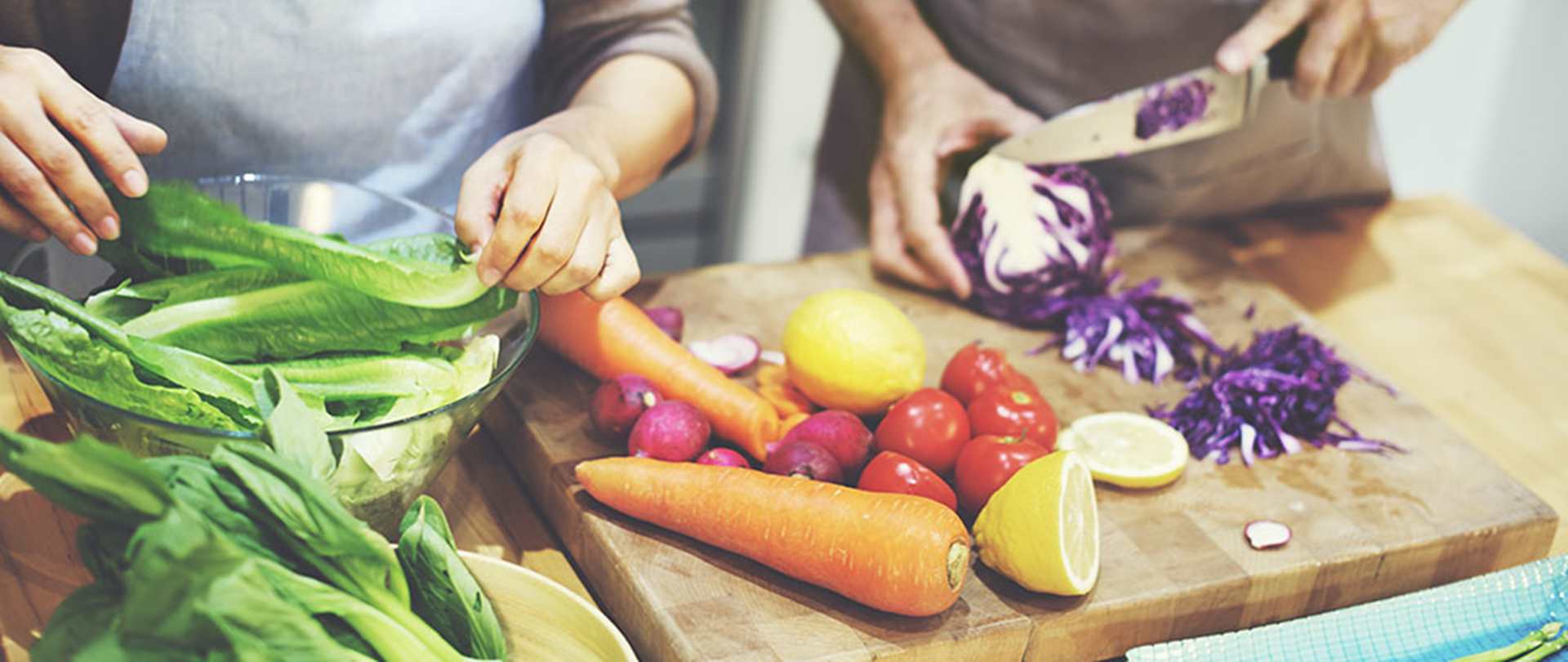Top tips for cooking at home
You can divide tasks up – those that are safest or of a lower skill level can easily be passed onto younger children, e.g. squeezing lemon juice, mixing ingredients in a bowl, rubbing butter into flour, tearing herbs and salad leaves.
When supplies and availability of specific or fresh ingredients may be scarce, don’t be put off cooking a recipe. You also don’t need a professional kitchen’s stock of equipment to get started! If you look at the list of ingredients or equipment and see there’s something you don’t have – there is likely to be a suitable swap or you can leave out an ingredient.
Here are our top tips for making the most of what you have and getting into the kitchen.
Swap instead of shop
- Use dried herbs instead of fresh
- Change the spice mix in a recipe to suit what you have in your cupboards - you could discover a brand new flavour combination!
- Chilli or soy sauce can sometimes substitute salt
- Mix and match the cheese required for a recipe with what is available, or even better, what you already have in your fridge
- Try swapping honey for sugar
- Use whatever oil you have - if you don’t have olive oil, vegetable will do!
- Use made-up powdered milk in sauces to save your fresh milk - just take care as it can burn more easily on the base of the pan.
- Reduce the meat content in recipes and add in pulses like canned beans or dried lentils. Brown lentils are particularly good used to stretch minced beef in recipes like Shepherd’s Pie and Lasagne.
- Vegetables and salad ingredients are quite easy to mix and match in recipes – if you don’t have one specific veg, another might do:
- Onions/leeks/spring onions
- Spinach/chard/kale
- Cucumber/courgette
- Crisp lettuce/white cabbage
- Butternut squash/sweet potatoes
Make your own!
Sour cream: add a tablespoon of lemon juice or white vinegar to yoghurt, or cream and milk
Buttermilk: use standard milk and tablespoon of lemon juice or white vinegar
Self-raising flour: add 2 teaspoons (10ml) of baking powder for each 150g plain soft flour and sift or whisk together to make sure it’s well mixed.
Waste not, want not
- Do a stock check of what’s in the fridge, freezer and cupboards and use up the oldest first.
- Don’t throw away dried-up bits of bread. Cut them into 2cm pieces, place on a baking tray, drizzle with a little cooking oil and some pepper/herbs and bake in a medium oven until crisp. Use them as croutons to add crunch to salads and soup. Or grate / blitz them to make breadcrumbs to freeze.
- There’s nothing more satisfying than creating a ‘what’s in the fridge?’ meal. Something like Spanish omelette works well, where you can use up any nearly-finished packs of frozen veg, fresh veg that’s nearing the end of its life, and any leftovers you’ve got lying around in the fridge. Herbs, spices, cheese and ham all add extra flavour!
- Use up the ends of packets of porridge oats, seeds and nuts to make home-made granola – a nice treat for breakfast!
Freeze, please
- Freeze fresh chillis, ginger and lemongrass then use only as much as you need from frozen.
- Freeze small portions of left-over sauces and casseroles to use at a later date as jacket potato fillings. Remember to label and date the bags so you don’t get a nasty surprise (!)
- Make a big batch of soup each week and store in household-size portions the fridge or freezer. This way, you’ll have something available for a quick lunch or tea.
- Make double the amount of a main meal or baked item and freeze one portion. Label with the recipe name and the date and store for up to 3 months.
Encouraging good habits
- Keep a shopping list on the go and add things to it as you run out – don't forget to take the list with you when you go out for essential food shopping!
- Have chunky fruit salad ready-made in the fridge for quick, healthy snacks for the children throughout the day. People are more likely to eat fruit when it’s cut up for them.
Simple equipment swaps
- If you don’t have a colander, you can use a sieve to wash and drain food
- Use an empty oil or drinks bottle as a rolling pin – fill with water to give it weight
- If you don’t have electric beaters or a food mixer, a wooden spoon, or standard whisks will work as well, with some extra arm power and patience! This is a great time to bring the whole family in to share the work creating your dish.
Feeling inspired to host a food activity with your community? Sign up for a Get Together today.


